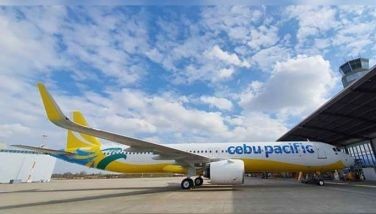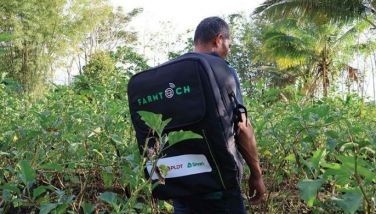'ASEAN's early years as an economic group: A memoir'

The Association of Southeast Asian Nations (ASEAN) was formed in 1967 as a grouping of neighboring countries to seek a common framework to defuse tensions among themselves and enhance their common well-being.
“ASEAN: in the beginning, a foreign ministers club.” The five original members – today, there are eleven – had distinctly different colonial histories. Malaysia and Singapore were former English colonies, Indonesia was Dutch- and the Philippines was Spanish-American-colonized. Thailand had never been ruled by a Western power. Despite their close geography, they had few things in common.
Political confrontation described their early post-independence relations. Indonesia had a period of confrontation with Malaysia at the latter’s independence. The Philippines had a tense relation with Malaysia because of the territorial claim to Northern Borneo. Singapore itself had just been kicked out of Malaysia. Thailand, of course, was the immediate neighbor to the Indochinese peninsula – the scene of a major war for decades.
The ASEAN foreign ministers met once a year to review the bonds of future cooperation. The meetings often ended with good speeches about Southeast Asian relations. As long as only the diplomats met, cooperation issues that affected integral operations of other ministries of governments had little chance of advancing.
“1973 oil shock and threat of food crisis spur regional cooperation.” In the early 1970s, the fortunes of countries dependent on oil changed. Moreover, food security became a concern when world food prices rose following the oil shock. The United Nation’s Food and Agriculture Organization (FAO) in Rome had sounded the alarm about world food security.
The immediate initiative came from Indonesian President Suharto who sent his economic ministers, Widojo (the coordinating economic minister) and Radius Prawiro (trade minister) to the ASEAN countries. The Widjojo mission was out to convince the ASEAN partners that there was a good basis for concrete economic cooperation in the dangerous world of the 1970s.
Indonesia and Malaysia, he said, were petroleum exporters. Thailand was a major rice exporter. Food production had huge potentials in the region. The region itself has potentials for cooperation among the countries in case of crises in these two commodities. Buffer stocks and easy credits could be made available to help countries in short supply.
A larger economic case for closer economic cooperation existed for which there was hardly any need for convincing. The combined economies had a potential to form a large trading bloc. Any idea that brought closer economic cooperation among neighbors was a good idea.
At the time, I was the Philippine economic minister and Minister Vicente Paterno of Industry (and chairman also of the Board of Investment) was the co-head. The two of us would be most involved in economic cooperation matters. When broached with these prospects in ASEAN, President Ferdinand Marcos was supportive.
“The first ASEAN economic ministers meet in Jakarta.” Shortly thereafter, the economic ministers of ASEAN met for the first time in Jakarta in November, 1975. Indonesian President Suharto met all the visiting economic ministers and then formally inaugurated the meeting with appropriate words of encouragement.
Afterwards, in unconventional fashion to make the meeting intimate and warm, Minister Widjojo invited the heads of the economic delegations to a small executive room in the conference hall. In that room, except for the brief lunch break, the ministers worked only among themselves, literally in shirtsleeves, at the exclusion of the senior officials who met on their own.
There were no speeches, no long monologues. We were like a focus group discussion – a bull session. Widjojo chaired, but it was a collegial informal meeting of minds, each being given a chance to comment on what others said as reactions right off the butt. There were eight economic ministers in all in attendance in this room: Widjojo and Radius Prawiro (coordinating economic minister and trade minister, respectively, Indonesia); Datuk Hamzah (minister of trade and industry, Malaysia); Preeda Patanathabutr (minister in prime minister’s office, Thailand), Hon Sui Sen (minister of finance, Singapore); and Sicat and Paterno (Philippines).
We reviewed our point of start as a grouping of countries. We had few common grounds together except for geography, being close neighbors. Big ideas like preferential trade or common markets or common industries or general approaches were heard but they eventually appeared distant possibilities yet.
To discuss actual cooperation projects, we had first to set up the machinery by which we could study ideas for cooperation. But the first order of the day was to secure a mandate from the heads of government. Thus, the draft of what came to be known as the ASEAN Concord would be prepared for the summit of leaders.
As I remember how those discussions went, Indonesia had the biggest “go-slow” caution for us. Indonesia was the biggest country. It had the highest level of protectionist economy then. In his own soft spoken way, Minister Widjojo would remind us that a good beginning for ASEAN would be a slow start. It would produce positive results rather than disappointments. Far better would this be than starting big and then finding discontent, unmet expectations and obviously later failure.
There was much wisdom in these words. ASEAN countries had come from a wide disparity of initial conditions in terms of internal policies and in economic outlooks. The first task was to get to know each other closer. Any effort to force the cooperation issues when the countries hardly knew each other, much more trust in each others’ actions, would end in more false starts. It was better to test the water every time a new venture was tried.
“The ASEAN Concord in Bali, 1976.” Three months after the first economic ministers’ meeting, the first summit meeting of ASEAN heads of state was held with President Suharto inviting them to Bali in February1976. At this meeting, the heads of ASEAN gave the economic ministers the mandate to undertake regional economic cooperation agreements.
From that time on, meetings of the ministers gathered force, at least twice a year for the ministers. The economic ministers following the summit led outlined potential work in the future and the creation of working committees each of them to be led by a member country. A member country took chairmanship of each of these committees. The following committees were set up: for energy and food, agriculture and forestry cooperation, for trade cooperation, for industrial cooperation, and for transportation and infrastructure.
“ASEAN is still young in its cooperation framework.” ASEAN regional economic cooperation began on broad fronts but slowly. Almost all the major ministries of government having to do with economic and social functions began contributing to the effort.
Today, ASEAN does not yet have the mature economic integration that Europe has attained. But it is far ahead of other regional economic cooperation bodies. ASEAN represents a much bigger grouping and potentially a large economic market. Nature does make jumps. Natura non facit saltum.
My email is: [email protected]. Visit this site for more information, feedback and commentary: http://econ.upd.edu.ph/gpsicat/
- Latest
- Trending





























